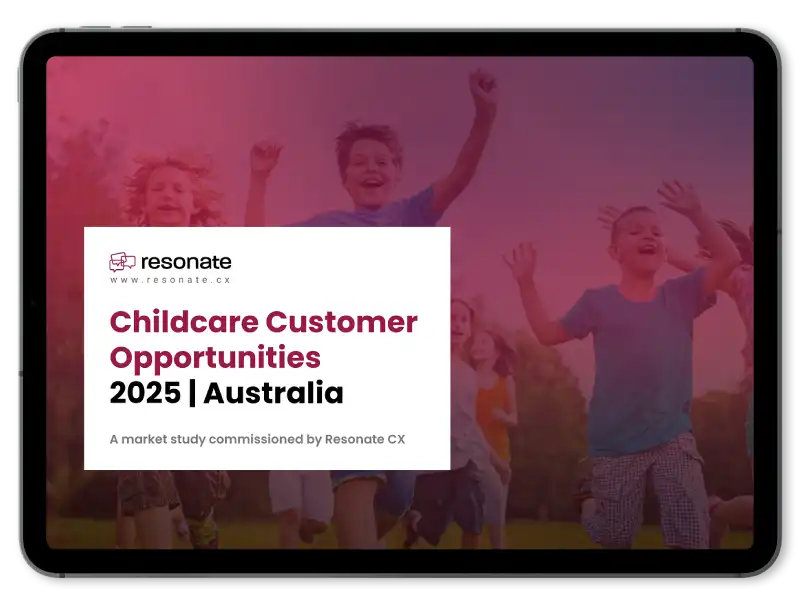Wouldn’t it be great to know exactly what your tenants think—right now, in real time, and all the time? Imagine having a constant pulse on their needs, preferences, and frustrations, empowering you to fine-tune your services before a customer even consider even has a chance to reconsider their office space with you.
In the world of flexi-space real estate, where traditional long-term leases are replaced with adaptable, on-demand options, feedback is your secret weapon. By truly listening to your tenants, you can turn insights into actionable improvements, creating spaces that stand out in a fiercely competitive market and learning from your customer to prioritise on the most important things that matter to your customers leading to more revenue.
Let’s jump right into the world of flexi-space customer experience or Voice of the Customer (VoC) and explore what it can do for your commercial real estate business!
Current pain points in the flexible workspace
The flexible workspace sector is facing a paradox: unprecedented demand, but a supply that’s struggling to keep up. Providers are navigating a landscape that’s more complex than anticipated just a few years ago. The root causes of these challenges are two-fold—businesses need agility, and individuals crave convenience—coupled with a mix of economic, operational, and structural obstacles.
1. Economic Uncertainty:
Lingering economic instability has dampened investor confidence, slowing the growth trajectory of flexible workspace providers. Despite clear signs of rising demand, investors remain cautious, prioritising risk management over rapid expansion. This hesitation restricts providers’ ability to scale their operations to meet market needs.
2. Rising Operational Costs:
The escalating cost of operations is another major hurdle. Providers must weigh the financial burden of expanding their footprint against the profitability of existing spaces, often leading to delayed or stalled growth decisions.
3. Hybrid Work Complexity:
The rise of hybrid work has introduced significant unpredictability into space utilisation patterns. Fluctuating office attendance makes it challenging for providers to forecast demand accurately, leaving them hesitant to invest heavily in new locations. This inconsistency creates a misalignment between demand signals and the supply needed to meet them.
4. Data Deficiency:
A lack of actionable market data further complicates matters. Providers struggle to identify where demand is strongest and which features tenants prioritise. This information gap hampers their ability to make confident, data-driven decisions, widening the supply-demand gap.
How the Voice of Customer (VoC) can help
As the flexible workspace industry grapples with unprecedented demand and supply constraints, a powerful tool emerges to help providers navigate these challenges: the Voice of Customer (VoC). By tapping into the needs and feedback of tenants, providers can transform obstacles into opportunities and drive growth. Here’s how VoC can help:
1. Prioritising Investments with Tenant Insights
VoC provides a clear understanding of what tenants truly value—whether it’s specific amenities, prime locations, or flexible lease terms. With this insight, providers can make informed investment decisions, focusing resources on high-demand features and maximising returns without the need for unnecessary expansion.
2. Navigating Economic Uncertainty
VoC offers actionable insights into tenant needs and behaviours in an environment of cautious investor sentiment. Providers can use this data to make strategic, data-driven decisions that minimise risk while addressing real market demands, building investor confidence in their growth plans.
3. Optimising Hybrid Work Solutions
With hybrid work models creating unpredictable usage patterns, VoC helps providers understand when and how tenants utilise spaces. Feedback on preferences such as hot-desking, meeting room configurations, and peak usage times ensures that providers can design spaces that meet evolving needs.
4. Enhancing Space Utilisation
Feedback might reveal demand for shared lounges, collaboration zones, or soundproof work areas, allowing providers to adapt spaces to match tenant expectations.
5. Reducing Operational Costs
Experiments can be tried out and you can see response form tenants e.g. flexible cleaning schedules how are tenants reacting. Like s smoke detector.
6. Closing the Data Gap
In a fragmented market with limited macro-level data, VoC programs generate a proprietary dataset that becomes a valuable asset. By aggregating tenant feedback, providers gain actionable insights for pricing strategies, marketing campaigns, and expansion plans, turning data into a competitive advantage.
7. Building Tenant Loyalty
VoC fosters a tenant-first culture by showing customers that their voices matter. By acting on feedback, providers enhance tenant satisfaction and loyalty, reducing churn and improving retention in a highly competitive market.
8. Staying Ahead of Regulatory and Social Shifts
As flexible working rights and regulations evolve, VoC programs provide a proactive approach to tracking tenant concerns and expectations. This ensures that providers stay ahead of regulatory changes and adapt their offerings to align with tenant needs.
By integrating VoC into their strategy, flexible workspace providers can not only meet the challenges of today’s market, but also position themselves for long-term success, ensuring that they remain relevant and responsive to tenant needs.
In the next section, we will delve further into how you can build an effective VoC program.
What does it take to build an effective VoC program?
If you’re new to the concept of VoC, think of it as a way to truly listen to your customers and use their feedback to improve your business. An effective VoC program isn’t just about gathering feedback; it’s about turning customer insights into actionable strategies. Here’s how to get started, step by step:
1. Define Your Goals
First, ask yourself: Why do you want to listen to your customers? What do you hope to achieve by gathering their thoughts and feelings? Are you looking to:
- Increase customer satisfaction?
- Reduce complaints or churn?
- Find out which features or services your customers value most?
Knowing your goals from the outset will help you stay focused and ensure that you’re working toward a clear, shared purpose. Remember, the more specific you can be, the more effective you’ll be in addressing your customers’ needs.
2. Choosing the right partner
As the saying goes, “You don’t have to do it alone.” Choose the right partners—whether it’s technology, tools, or people—to help you gather and analyse customer feedback. Look for those who understand the importance of listening and will work with you to turn that feedback into practical insights.
3. Choose How to Collect Feedback
Now, it’s time to think about how you’ll gather that feedback. The most important thing is to keep it simple at first. You don’t need to overwhelm yourself or your customers. Here are a few ways to begin:
- Email Surveys: A simple, quick way to understand customer satisfaction.
- QR Codes: Place them at various touchpoints to make it easy for customers to share their thoughts.
- SMS: Reach customers where they are, in real-time, for immediate feedback.
- Online Reviews & Social Media: Keep an eye on what people are saying about your brand in digital spaces.
Remember, start small. As you learn more, you can expand your methods of feedback collection.
4. Analyse the Feedback—Look for Patterns, Not Problems
It’s easy to get caught up in complaints, but the key is to listen actively. Look for patterns in what your customers are saying. Do they mention the same frustrations over and over again? Are there positive comments that highlight what you’re doing well? Focus on these recurring themes and use them to guide your next steps.
For example, if customers frequently mention that your website is hard to navigate, that’s a clear signal to take action. If they ask for faster delivery, consider ways to improve your shipping process.
5. Act on the Insights
Once you’ve understood the feedback, it’s time to act. Don’t just collect information—use it! If customers say your website is too complicated, make it more user-friendly. If they want faster delivery, work with your logistics team to speed things up. The key here is to show your customers that you’ve heard them and you’re making changes based on what they’ve said.
But don’t stop there! Be sure to tell your customers about the changes you’ve made. It’s a simple, yet powerful way to show that you’re truly listening and that their opinions matter.
6. Start Small and Scale Over Time
You don’t need to perfect everything at once. Start by listening to your customers in one or two areas, then expand as you learn. For instance, you might begin by improving your customer service and later move on to refining your product or pricing.
7. Build a Culture of Listening
For your VoC program to truly succeed, everyone in your organisation must be involved. Make customer feedback a regular part of your conversations, whether it’s in team meetings or one-on-one discussions. Encourage employees to share their insights and ideas on how to improve based on what customers are saying. When everyone is on board, the entire organisation becomes more focused on creating outstanding customer experiences.
8. Measure Success
Finally, track your progress. How do you know if your efforts are paying off? Look at metrics like:
- Fewer customer complaints
- Higher customer satisfaction scores (like Net Promoter Score [NPS] or Customer Satisfaction [CSAT])
- More positive online reviews
These metrics are signs that your VoC program is working and that your customers feel heard. Use them for improvement and celebrate the wins along the way.
Why It Matters
Building a VoC program might sound intimidating, but at its core, it’s about one simple idea: listening to your customers. Start small, keep it practical, and focus on learning from your customers to create better experiences. Over time, this will help you build trust, loyalty, and a stronger business.
Conclusion
Understanding the pain points of your tenants is key to sustainable success in the flexi-space. Knowing what truly matters to your tenants means staying ahead of the curve. Their feedback is the blueprint to create spaces that resonate with their evolving expectations.
By using Voice of the Customer (VoC), you’re equipped to tackle the toughest challenges in the flexi-space sector, such as managing hybrid work complexities and prioritising investments that deliver real value.
But all of this hinges on one crucial element: an effective VoC program. Building a structured and purposeful approach to gathering. analysing, and acting on feedback ensures your tenants’ voices are at the heart of every decision. As such, use it as a strategy to future-proof your business.
Start small, stay committed, and keep learning from the people who matter most: your customers. In doing so, you’ll create not only better workspaces but also enduring relationships that elevate your business from good to unforgettable.
Ready to transform your flexi-space tenant feedback into actionable insights? Discover how Resonate CX’s all-in-one AI-native CXM platform can help you optimise customer experience management and drive satisfaction. Learn more here.








